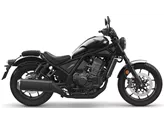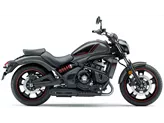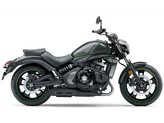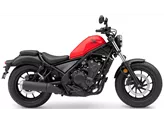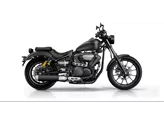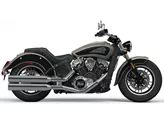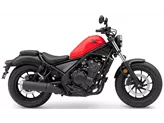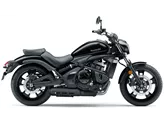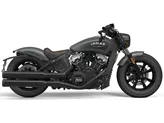Yamaha XV 950 R 2014 vs. Kawasaki Vulcan S 2015

Yamaha XV 950 R 2014

Kawasaki Vulcan S 2015
Visão geral - Yamaha XV 950 R 2014 vs Kawasaki Vulcan S 2015
The Yamaha XV 950 R 2014 and the Kawasaki Vulcan S 2015 are both chopper/cruiser motorcycles with similar features and specifications. However, there are some notable differences between the two models.
In terms of the engine and drivetrain, the Yamaha XV 950 R has a larger displacement at 942cc compared to the Kawasaki Vulcan S's 649cc. This results in a higher power output for the Kawasaki Vulcan S at 61 HP compared to the Yamaha XV 950 R's 52 HP. The Yamaha XV 950 R has a higher torque at 79.5 Nm compared to the Kawasaki Vulcan S's 63 Nm. Both motorcycles have a 2-cylinder engine, but the Yamaha XV 950 R has an air-cooled system while the Kawasaki Vulcan S has a liquid-cooled system. The Yamaha XV 950 R has a belt transmission, while the Kawasaki Vulcan S has a chain transmission.

Yamaha XV 950 R 2014
In terms of the chassis, both motorcycles have a steel frame. However, the Yamaha XV 950 R has a double cradle frame, while the Kawasaki Vulcan S has a perimeter frame. The Yamaha XV 950 R has a narrower front tire at 100mm compared to the Kawasaki Vulcan S's 120mm. The Yamaha XV 950 R has a 19-inch front tire diameter and a 16-inch rear tire diameter, while the Kawasaki Vulcan S has an 18-inch front tire diameter and a 17-inch rear tire diameter. The Yamaha XV 950 R has a shorter wheelbase at 1570mm compared to the Kawasaki Vulcan S's 1575mm. The seat height is slightly lower on the Yamaha XV 950 R at 690mm compared to the Kawasaki Vulcan S's 705mm. The Yamaha XV 950 R is also slightly heavier at 251kg compared to the Kawasaki Vulcan S's 228kg. The Yamaha XV 950 R has a smaller fuel tank capacity at 12 liters compared to the Kawasaki Vulcan S's 14 liters.
In terms of strengths, the Yamaha XV 950 R has a minimalist design with sporty touches, a well-maintained engine, a stretched and stable chassis, stable brakes, good finishes, a low center of gravity, and a low seat height advantageous for smaller riders. On the other hand, the Kawasaki Vulcan S has a engine with good rotation that also performs well at low speeds, decent brakes with ABS, an idiosyncratic appearance, a narrow 160mm rear tire for maneuverability, and the Ergo-Fit system for optimal rider adaptation. The Kawasaki Vulcan S also has a chassis that is sufficiently comfortable.

Kawasaki Vulcan S 2015
In terms of weaknesses, the Yamaha XV 950 R has a lack of momentum in the engine, limited clearance in the lean angle, and a subdued sound. The Kawasaki Vulcan S has an additional cost for the Ergo-Fit system, moderate wind protection, and the gear shift indicator is only available as an option.
Overall, both the Yamaha XV 950 R 2014 and the Kawasaki Vulcan S 2015 are capable chopper/cruiser motorcycles with their own strengths and weaknesses. The choice between the two would depend on the rider's preferences and priorities, such as power, maneuverability, comfort, and customization options.
Especificações técnicas Yamaha XV 950 R 2014 em comparação com Kawasaki Vulcan S 2015
Prós e contras em comparação
Prós e contras em comparação
Yamaha XV 950 R 2014

Visualmente, a Yamaha XV950R faz tudo bem - destaca-se da grande variedade de cruisers com o seu toque desportivo. Na condução, contudo, não se destaca significativamente da concorrência. A XV950R também tem o problema habitual de baixa folga do ângulo de inclinação, o que não é ajudado pela afinação mais firme do chassis.
Kawasaki Vulcan S 2015

A Vulcan S está a revigorar o cenário das "pequenas" cruiser de tamanho médio - não só devido ao seu design único, mas também porque é muito fácil de conduzir e se destina a principiantes. A baixa altura do assento e o selim estreito ajudam o condutor a manter-se seguro no chão, enquanto o baixo centro de gravidade também permite um manuseamento fácil e seguro. O motor também se enquadra bem na aparência descomplicada, pode ser acelerado decentemente a partir das 2000 rpm e só pára por volta das 10.000 rpm - algo nunca antes visto numa cruiser. O sistema "Ergo-Fit", que varia a altura do assento, a distância do condutor ao guiador e os apoios para os pés, tem um custo adicional, mas também permite ao proprietário da Vulcan S generosas opções de personalização.
Comparação de preços Preço médio de mercado Yamaha XV 950 R vs Kawasaki Vulcan S
There are a few key differences between a Yamaha XV 950 R 2014 and a Kawasaki Vulcan S 2015. In terms of price, the actual average price of a Yamaha XV 950 R 2014 is about 19% higher. A Yamaha XV 950 R 2014 experiences a loss of 3.910 BRL in one year and 5.370 BRL in two years of ownership. This is offset by a loss of 2.530 BRL and 2.650 BRL for a Kawasaki Vulcan S 2015. Compared to Kawasaki Vulcan S 2015 there are less Yamaha XV 950 R 2014 bikes available on the 1000PS.de Marketplace, specifically 6 compared to 8. It takes less time to sell a Yamaha XV 950 R with 54 days compared to 75 days for a Kawasaki Vulcan S. Since model year 2014 1000PS.de editors have written 3 reviews for the Yamaha XV 950 R and 13 reviews for the Kawasaki Vulcan S since model year 2015. The first review for the Yamaha XV 950 R was published on 22/07/2013 and now has more than 53.200 views. This compares to more than 14.800 views for the first review on Kawasaki Vulcan S published on 16/10/2014.


